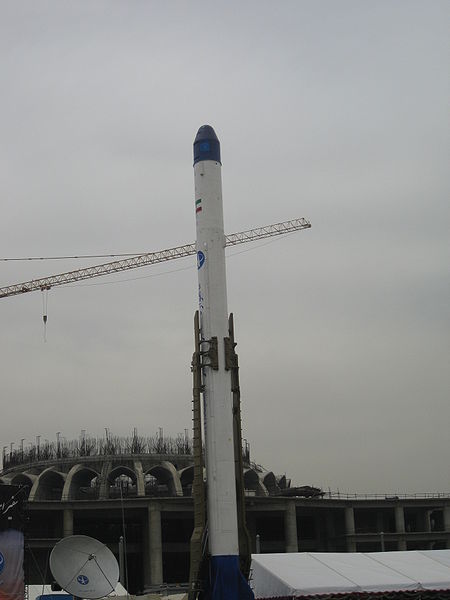The Safir was the first Iranian expendable launch vehicle able to place a satellite in orbit. The first successful orbital launch using the Safir launch system took place on 2 February 2009 when a Safir carrier rocket placed the Omid satellite into an orbit with a 245.2 km (152.4 mi) apogee. This made Iran the ninth nation capable of producing and launching a satellite.
Safir's 2012 launch from Semnan Space Center with Navid satellite as its payload
Damaged launch pad at Imam Khomeini Spaceport after rocket explosion of 29 August 2019 during launch preparation
2012 launch of navid satellite
Safir at an exhibition at the Mosalla of Tehran
An expendable launch system is a launch vehicle that can be launched only once, after which its components are either destroyed during reentry or discarded in space. ELVs typically consist of several rocket stages that are discarded sequentially as their fuel is exhausted and the vehicle gains altitude and speed. As of 2024, less and less satellites and human spacecraft are launched on ELVs in favor of reusable launch vehicles. However, there are many instances where a ELV may still have a compelling use case over a reusable vehicle. ELVs are simpler in design than reusable launch systems and therefore may have a lower production cost. Furthermore, an ELV can use its entire fuel supply to accelerate its payload, offering greater payloads. ELVs are proven technology in widespread use for many decades.
H-IIA F19 launch
H-II Transfer Vehicle
Shavit launcher
Image: Delta IV launch 2013 08 28








